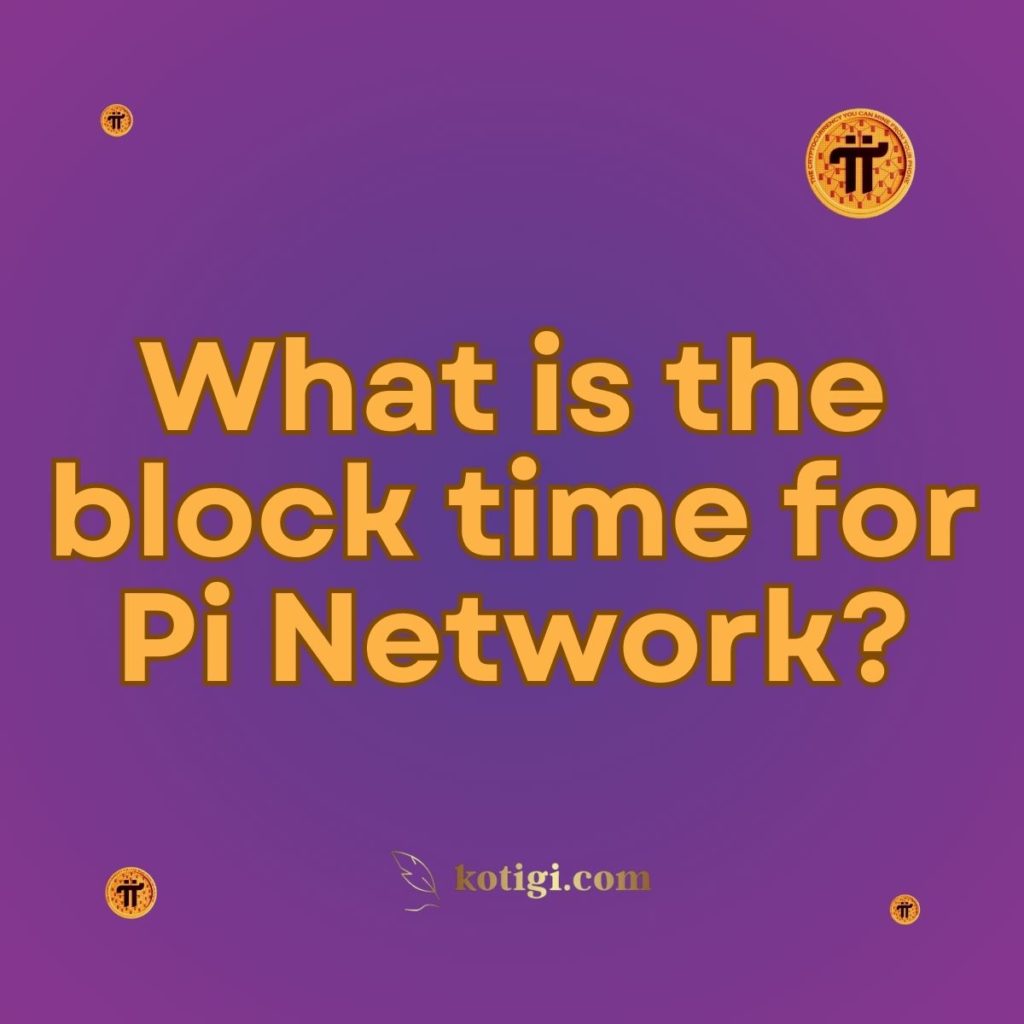
What is the block time for Pi Network?
Since Pi Network is still in its development phase and has not yet fully transitioned to a public mainnet, specific block time metrics are not fully established or publicly available. However, it is faster than Bitcoin and Ethereum.
Unlike traditional cryptocurrencies, Pi Network does not operate on a fixed block time. Instead, it employs a unique consensus mechanism that allows for flexible transaction processing, particularly during its testing phase prior to the mainnet launch.
The block time for Pi Network, which is the time it takes to validate and add a new block to the blockchain, has not been explicitly detailed in public documentation.
Introduction
Understanding block time is crucial for anyone engaging with blockchain technology, especially in the context of cryptocurrencies like Pi Network. Block time affects how transactions are processed and confirmed, ultimately influencing user experience and the overall functionality of the network. This article will explore the concept of block time, how Pi Network approaches this aspect, and its implications for users and the cryptocurrency ecosystem.
Understanding Block Time
What is Block Time?
Block time refers to the average duration it takes for a new block to be added to a blockchain. Each block typically contains a set of validated transactions, and this process is vital for maintaining an accurate and secure ledger. A shorter block time can lead to quicker transaction confirmations but may introduce risks like forks or increased vulnerability to attacks. Conversely, a longer block time can enhance security but slow down overall transaction speeds.
Importance of Block Time
Block time significantly impacts several factors within a blockchain network:
- Transaction Speed: The frequency at which new blocks are added affects how quickly transactions are confirmed, which is critical for user satisfaction.
- Network Security: Longer block times provide more opportunities for nodes to validate transactions, thus enhancing security against attacks and double-spending.
- User Experience: Consistent and predictable block times contribute to a positive user experience, encouraging broader adoption of the cryptocurrency.
Pi Network’s Approach to Block Time
Flexible Transaction Processing
Pi Network does not adhere to a strict block time like many established cryptocurrencies. Instead, it uses a unique consensus mechanism called Federated Byzantine Agreement (FBA), which allows for more flexible transaction processing. This approach is particularly relevant during the testing phase of the network, as it prepares for the transition to its Open Mainnet.
Consensus Mechanism
The FBA model used by Pi Network allows nodes to reach consensus without relying on resource-intensive mining processes. This enables efficient validation of transactions and reduces the time needed to confirm new blocks, making the network more accessible to everyday users who can mine Pi coins using their smartphones.
Implications for Users
- Transaction Confirmations: Users can expect transactions to be processed quickly, although the exact timing may vary based on network activity and conditions.
- User Engagement: The flexible nature of transaction processing allows users to engage with the network without worrying about lengthy delays, fostering a more active community.
- Future Developments: As Pi Network transitions to its Open Mainnet, the developers may establish more defined parameters for transaction processing times, but the emphasis on flexibility is likely to remain a core feature.
Comparisons with Other Blockchains
Bitcoin
Bitcoin has a fixed block time of approximately 10 minutes, which contributes to its reputation as a secure and stable cryptocurrency. This consistency aids in predicting transaction confirmations but can lead to slower processing times during periods of high demand.
Ethereum
Ethereum, on the other hand, boasts a much shorter block time of around 12 to 15 seconds. This rapid confirmation speed is advantageous for applications requiring quick transactions but can also introduce complexities related to network congestion.
Cardano
Cardano features a varying block time, generally ranging from 20 seconds to 1 minute. Its proof-of-stake consensus mechanism balances speed and security, allowing for efficient processing while maintaining decentralization.
The Role of Community in Transaction Processing
Community Feedback
The Pi Network thrives on community involvement and feedback. Users are encouraged to share their experiences and suggestions, which can directly influence how transaction processing is optimized as the network evolves.
Engagement and Activity
As the community grows and becomes more active, the transaction dynamics may shift. Increased user engagement can lead to higher transaction volumes, requiring the network to adapt and maintain efficient processing times.
Education and Awareness
Educating users about how Pi Network’s transaction processing works is essential. Understanding the flexible nature of block time will empower users to navigate the network more effectively and contribute positively to its growth.
Future Outlook for Pi Network’s Transaction Processing
Technological Innovations
As blockchain technology progresses, Pi Network may explore various innovations to improve transaction processing times and efficiency. Advances in consensus mechanisms or network architecture could lead to further enhancements without compromising security.
User Expectations
As the cryptocurrency landscape evolves, users increasingly expect quick and efficient transaction processing. Pi Network will need to adapt to these expectations to remain competitive and appealing.
Ongoing Development
The development team at Pi Network is committed to refining and improving the platform based on community feedback and technological advancements. As the network matures and transitions to its Open Mainnet, user experience will remain a priority.
Conclusion
Pi Network’s approach to block time is characterized by flexibility rather than a fixed duration. This enables efficient transaction processing and supports the network’s goal of accessibility and user engagement. Understanding the unique aspects of Pi Network’s transaction processing is crucial for anyone interested in the platform.
As Pi Network continues to evolve, the emphasis on community involvement and technological advancements will play a significant role in shaping the future of transaction processing. By staying informed and engaged, users can contribute to the ongoing success of Pi Network and help establish it as a viable cryptocurrency in the digital landscape.
Key Takeaways:
- Pi Network does not have a fixed block time; instead, it utilizes a flexible transaction processing model.
- The Federated Byzantine Agreement (FBA) consensus mechanism enables efficient validation of transactions.
- Community engagement and feedback are vital for optimizing transaction processing as the network evolves.
- Comparisons with established cryptocurrencies highlight Pi Network’s unique position and approach to transaction confirmation.
- Ongoing development and technological advancements may further enhance transaction processing capabilities in the future.





